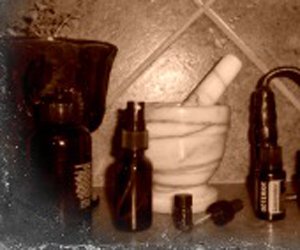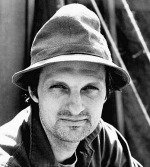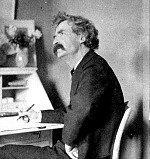Can Water Cure Disease?
History Has Proven One Water Cure After Another

Polio alternative
Sister Elizabeth Kenny showed the world how effective the use of hydrotherapy (water therapy) was with polio. She used hot compresses and specific massage techniques to prevent children from being crippled.
She was so successful that she opened clinics in Australia just for that purpose. Of course, the ego of the medical establishment saw that her doors were closed repeatedly.
After spending her life fighting for these children and being defeated, she finally came to the United States. Here, her polio treatment was valued and the Sister Kenny Institute was established in 1942.
Her technique saved a celebrity

Actor Alan Alda (Hawkeye Pierce, MASH series), gives Sister Kenny's techniques credit for his survival of polio. According to Alda, his mother picked up one of Sister Kenny's brochures while waiting for Alan to see the doctor. She started researching the technique, then used it to treat his polio.
Although, he remembers the treatment as being excruciating, Alda believes he would have died under conventional medical treatment.
Mark Twain's Mom was pretty smart, too

She used cold water to keep Twain healthy. He didn't enjoy the treatment, but gave his mother credit for his great immune system.
According to Twain, every morning his mother would make him stand in the back yard, naked. She then threw a bucket of cold water on him, wrapped him in a wet sheet, then put him in the bed wrapped in a woolen blanket.
Shortly, thereafter, Twain would get really warm and break out into a "powerful sweat". This old self care technique helped rid his body of toxins, plus boosted his immune system.
From farm boy to world known healer
Vincent Preissnitz was a simple farm boy during the early 1800's. One day, he got his fingers mangled in a piece of farm equipment. His neighbor used cold water applications to treat the damage. Vincent's hands healed with no signs of the injury.
Years later, his ribs were crushed in a wagon accident. The doctors told him he would always be cripple from the injuries.
Preissnitz refused to accept this. Instead, he went home and treated himself. First, he manipulated his ribs back into position. Then, he wrapped himself in cold wet sheets and drank cold water. Eventually, he recovered 100%.
News of his healing spread like wildfire and people started seeking his cold water treatments for help with their own problems.
Priessnitz treated 1600 people from all over the world in 1840. Then, in 1843, he wrote The Cold Water Cure and became wildly famous. His story was just the tip of the iceberg in the history of using water for therapy.
His general protocol
- Apply a cold, wet sheet to the patient in the early morning hours.
- The patient was then to disrobe and lie on top of blankets. The wrung out, cold sheet was placed on top of him and tucked in tightly around the shoulders. He was then covered by a blanket, drawn tightly over him.
- Care had to be taken to make sure this fit snugly across the chest. Then, the patient was to lie there for 20 minutes to an hour.
- Once the body got heated, the corner of a fresh, cold, dripping sheet was used to wipe the face, head and neck.
- Then, let the sheet was unfolded over the patient and he was briskly rubbed down the back and legs. At the same time, the patient rubbed his chest and stomach. This was done for 2-3 minutes until red.
- This was repeated with a dry sheet.
- Afterward, the patient would dress himself, drink some water and take a nice brisk walk.
- This protocol would be repeated a few times a day, then gradually decreased as the patient improved.
A more complex water cure was used for:
|
|
Sebastian Kniepp is another famous name in the world of hydrotherapy. He was diagnosed with tuberculosis, which kept him from entering the monastery.
He had heard of Priessnitz's water cure and was inspired. He would walk to the Danube River, undress, and immerse himself in the freezing water for a few seconds. Then, he would dress and walk home.
This was done 3 times a week until his tuberculosis went into remission. Kniepp then joined the monastery and became a priest.
The Cornflake man
John Harvey Kellogg (yes, the cereal guy) ran the Battle Creek Sanitarium in the early 1900's.
People were put through a series of colonics upon being admitted to the sanitarium. His belief was that cleaning the colon with water was the first step to getting well.
After that, the patients were treated with a variety of water treatments.
Drugs vs Nature
The introduction of pharmaceutical drugs saw hydrotherapy techniques start to fall by the wayside. It became more popular and more convenient to take some medicine, instead of putting out the effort to use what nature has provided.
We are now seeing more and more people turning back to the days of yesteryear. The dangerous side effects of medications has taken its toll on families. Water cure methods, herbal remedies, essential oils and other holistic methods are being reintroduced to our society as a safer way to keep our bodies health.
Home › Water Cure